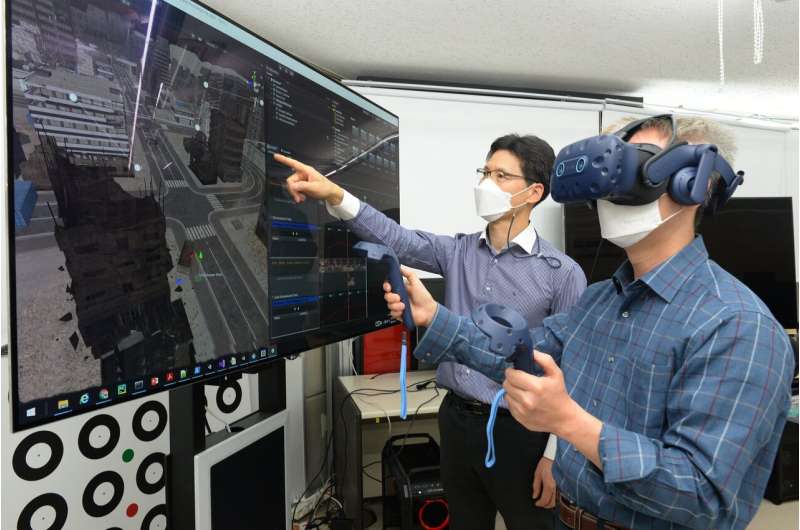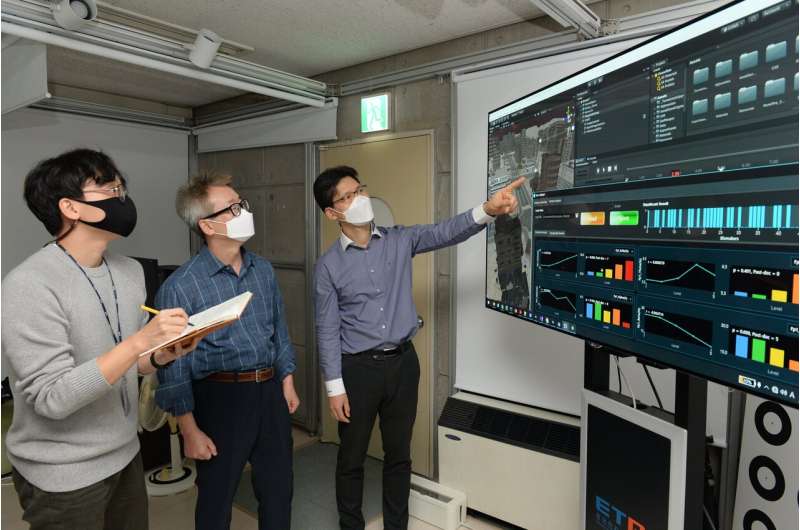A new technology to reduce motion sickness associated with VR headsets

Researchers in Korea have analyzed the symptoms of motion sickness that users may experience in VR content and developed a technology to reduce VR sickness using artificial intelligence. The technology is expected to be of great help to VR content developers in creating application services while giving full rein to their creativity.
Electronics and Telecommunications Research Institute (ETRI) announced on the 26th that it has succeeded in developing a software that can accurately predict the level of VR sickness based on artificial intelligence technology.
While VR technology is expanding to various fields such as education, entertainment, and sports, a VR headset such as head-mounted display (HMD) worn to increase the sense of immersion for an extended time often causes nausea, vomiting, and dizziness among some users; thus hindering the commercialization and widespread adoption of VR technology.
Nonetheless, it was difficult to find the exact cause of and solution to VR sickness as there are many factors related to its occurrence. In particular, it was challenging to conduct systematic analysis to clarify the quantitative correlation between the factors causing VR sickness.
ETRI developed a technology for deriving the correlation between VR elements and VR sickness by obtaining experimental data from more than 500 users and applying machine learning. What makes this research even more significant is that it utilized a larger scale experiential data reflecting individual characteristics, taking into account the large gaps on the level of VR sickness experienced by different users.
The "VR Human Factor based VR sickness analysis and monitoring tool" developed by the research team is a learning engine software that collects bio-signals1) from users and predicts VR sickness with artificial intelligence. In other words, it is a technology that analyzes the types of VR sickness experienced by each individual through biomarker2) pattern detection.
This technology can also be used in the healthcare field when the SW, after appropriate adjustment, is connected to a bio-signal acquisition device for psychological and mental analysis. In particular, it is mounted on "Meddiction-S," a VR-based alcohol addiction treatment device from Meddiction, Inc., slated to undergo the approval and review procedure for medical devices.
As another technology developed by the researchers, "VR sickness reduction content authoring tool" enables the real-time adjustment of VR elements on the fly during the content production process; thus reducing sickness easily.

Previously, when developing VR content, intermediate verification was repeated and factors that might affect sickness were manually adjusted; this required subjective judgment and took a lot of time and cost.
However, this tool can objectively adjust the content ranging from level 1 to 5 based on quantitative indicators. It is readily compatible with the Unity3) game engine widely used in general game development. Intuitive and real-time editing4) of sickness-causing factors is expected to increase the performance of the VR developers further.
Commercial VR games using ETRI technology have also been released. "Special Force VR: INVASION" by Dragonfly Co., Ltd., which joined as a joint research institute, has adopted the research team's VR sickness reduction content authoring tool to reduce sickness in game play significantly and was released in domestic and international markets since 2019.
The researchers also developed a "VR human factor-based motion data editing tool" that can analyze and reduce VR sickness on a rider-type VR device (also called motion simulation platform). This technology can reduce motion sickness by automatically adjusting or editing content while interpreting the difference in the amount of information between VR images and user actions as an entropy5). It will be primarily applied to interactive ride-on toys and used for VR sickness and safety analysis.
This achievement accrues to the research project of hi-tech digital content convergence technology development6) by the Ministry of Science and ICT (MSIT) in Korea. In particular, it was selected as one of the top 100 national R&D projects in 2020, which is a green light for the wider adoption of VR technology.
"We will try to promote the commercialization of VR technology in various fields such as high-level job training, mental illness treatment, medical simulation, etc. using the world's first developed VR sickness analysis and prediction technology," Dr. Wookho Son of ETRI's CG/Vision Lab said.
Until now, ETRI has been making great efforts to establish international standards related to VR technology. In particular, as a result of its participation as an editor in the Working Group under the IEEE Standards Association (SA)7) and leading of standardization-related work, the draft of international standards was approved and published on December, 2020. Technologies such as VR sickness reduction API, VR sickness analysis and prediction method developed by ETRI have become the international Standard Essential Patent.
ETRI has globally disclosed through IEEE the VR sickness clinical trial database as the core basic data of this international standard technology, as well as the developed VR sickness prediction module in the form of an executable file through the Korea VR/AR Industry Association (KoVRA), which is expected to contribute to the development of the VR research ecosystem.
Previously, the researchers has also unveiled the "Guidelines for VR Use and Production Safety" for the first time in Korea in 2017, which contains instructions for developing VR applications where VR sickness reduction is specifically needed.



















